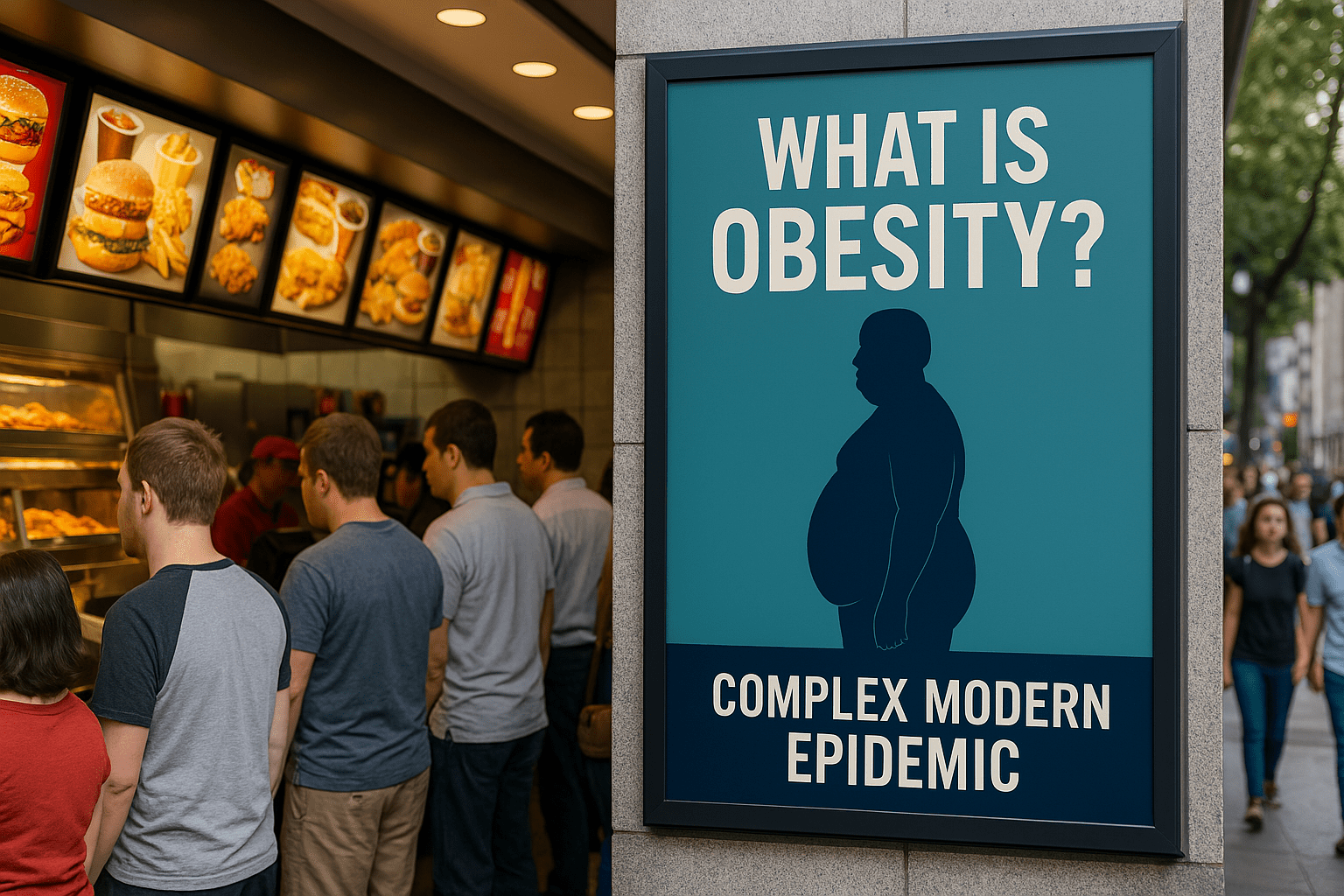Obesity is often misunderstood as simply a matter of overeating or laziness. But dig deeper, and you’ll find it’s a multi-layered public health crisis, shaped by biology, behavior, economics, environment, and governance.
Let’s unpack obesity in all its dimensions — not just as a health condition, but as a mirror to how our world works.
🔬 1. The Medical Definition (But It’s Just the Tip)
Medically, obesity is defined as excessive fat accumulation that presents a risk to health. The most common measure is Body Mass Index (BMI) —
- BMI ≥ 25 is considered overweight
- BMI ≥ 30 is classified as obese
But BMI doesn’t tell the full story. It doesn’t distinguish between fat and muscle or consider visceral fat, which is the dangerous kind wrapped around internal organs.
🧬 2. Biology and Genetics: You’re Not Always in Control
Many individuals are genetically predisposed to gaining weight. Genes can:
- Influence how your body stores fat
- Affect hunger and satiety signals
- Interact with stress hormones like cortisol
In short: for some people, their biology fights against their efforts to stay lean.
🧠 3. Behaviorism and the Brain: Why We Overeat
Modern obesity is also a behavioral disorder driven by engineered food environments:
- Hyperpalatable, ultra-processed foods override satiety signals
- Dopamine-driven eating mimics addiction
- Stress and poor sleep contribute to binge-eating patterns
The rise in obesity isn’t just about choice — it’s about how choices are shaped.
🏙️ 4. The Built Environment: Cities Designed for Obesity
- Lack of walkable spaces
- Car-centric infrastructure
- Unsafe parks and limited recreational zones
- Food deserts in urban slums
Obesity thrives in places where movement is inconvenient and healthy food is inaccessible.
🍔 5. Corporate Influence: How Business Fuels Fat
Food corporations spend billions on:
- Marketing junk food to children
- Placing sugary snacks at checkout lines
- Funding biased research to confuse consumers
There’s a reason why cheap, addictive food is everywhere. It’s by design, not accident.
🏛️ 6. Policy Gaps: Where Are the Food Authorities?
While tobacco is regulated aggressively, obesogenic foods are not:
- No warning labels on high-sugar, high-fat products
- Weak advertising regulations
- Food subsidy policies still favor calorie-dense staples
Where is the regulatory push from food authorities to protect public health?
🌍 7. Global Spread: Obesity Is No Longer a Western Problem
- Over 1 billion people globally are obese, including over 160 million children
- India has 135 million obese individuals — and rising
- Urban and rural gaps are shrinking as junk food penetrates rural markets
Obesity has gone global, but each region brings its own risk factors.
🧓 8. Intergenerational Impact: Fat Genes, Fatter Future
Maternal obesity affects the fetus:
- Increased risk of childhood obesity
- Early-onset diabetes
- Epigenetic changes that influence metabolism
This means obesity can be biologically inherited, not just socially taught.
📉 9. Economic Cost: Personal and National
- Higher risk of Type 2 diabetes, heart disease, and cancer
- Greater healthcare costs
- Lower productivity, reduced quality of life
For governments, obesity is not just a health issue — it’s a macroeconomic burden.
💥 10. Obesity Is a Symptom, Not Just a Disease
Obesity is the outcome of systemic failures:
- Behavioral economics gone wrong
- Food systems prioritizing profits over health
- Public policy lagging behind corporate strategy
We must stop seeing it solely as a personal failure. It’s a collective challenge that reflects the systems we live in.
🛑 Final Thought: Rethinking Obesity
To truly tackle obesity, we must:
- Redesign our food systems
- Rebuild urban spaces
- Reinvent how we think about body image, health, and personal responsibility
Obesity isn’t just about calories. It’s about context.



